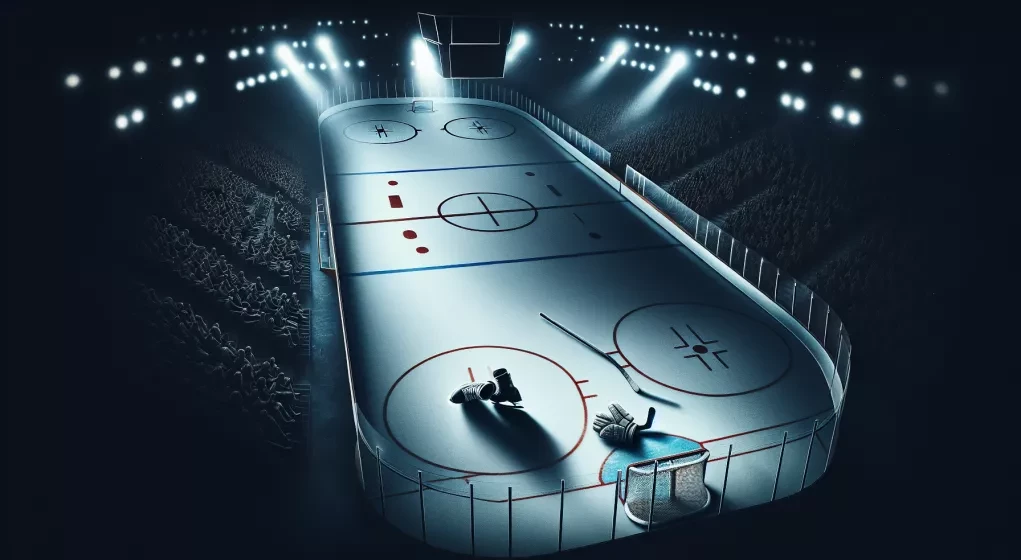As autumn leaves took their inevitable tumble in the early fall of 2022, the sports world held its breath, its gaze fixed on Dillon Dubé, a Calgary Flames sophomore whose name had been whispered among the trees. Dubé, once a bright-eyed element of the 2018 national junior team, faced the press in training camp, confronting a storm that had buffeted the very core of Hockey Canada.
Seemingly ensnared in allegations of sexual assault that haunted the past summer, Dubé stood before us, a figure both resolute and enigmatic. “Since the beginning, I guess, I’ve co-operated in any way possible. I will continue to do that,” he professed to the huddled mass microphones and notepads. His voice carried a note of restraint, eyes evoking a poignant tale, “…I wish I could share more. But that’s all I can share at this point.”
The probing inquiry fell – had law enforcement engaged with him? “I would love to be transparent…I wish I could tell,” he murmured, a veil of sincerity painting his words. Onlookers, both in the flesh and through the lens of various screens, nodded, empathy threading their understanding. Indeed, who would say such a thing if their heart did not align with truth?
As fate would curve its unforgiving arc, Dubé surfaced as one of five players accused, captives of that very 2018 incident.
The protectors of NHL’s sanctum, orchestrators of arenas where blades meet ice, responded not with a moral compass but with the deftness of those skilled in the art of public relations – a mastery that had no precedent in their playbook. Applying rules as taut as trade-deadline regulations, they built a fortress where silence was the mortar and reticence the shield.
In lieu of reckonings of the spirit, the NHL offered us remedies born of market strategies. What could have been an unravelling was merely a brush with calamity. Yet, as the All-Star weekend unfolded in Toronto, home to the voices that echo through the halls of hockey, the issue transformed into a seeker of heat, turning on its axis, scanning for a mark.
Gary Bettman, the NHL commissioner, took the helm during his habitual stride into the spotlight reserved for the All-Star break. His mission myriad – to preserve the emblematic shield, disown the accused, accelerate discourse, all the while revealing nothing. With the poise of a set piece masterfully achieved, he presented an allegory akin to what Dubé had once attempted.
Two years had offered ample reflection, and with a gambler’s calm, Bettman laid out the league’s legal gambit – “Who? Us?” The league had conducted its probe; the dots connected, the interviews logged – each member of the junior team’s narrative collated and filed. The revelation of completion, although fresh, was to remain shrouded, now that the baton had been passed to criminal investigators.
“It would be inappropriate to provide further comment on the matter,” came Bettman’s decreed refrain.
As though he who had been moments ago the scholar on the rise of northern Italian arenas had succumbed to a sudden amnesia when the scandal’s ghost brushed past. The orchestrated nature of the league’s ballet was palpable to even the most naive.
The accused, once garbed in the NHL’s luminous tapestry, found themselves unthreaded. Bettman, with calculated indifference, disowned them, transforming them into free agents of an ambiguous nature, “these players we inherited,” a phrase that might soon erase their very images from the annals of team history.
Bettman’s message was crystal – the accused floated in a sea bereft of NHL’s grace, their fates tied to a solitary dinghy amidst a tempest of public opinion.
The investigation, promised for release post-trial conclusion, suspended in time, would one day speak. Would its whispers echo the court’s? That remained to be penned.
A tale of failures unfolded, a tapestry of errors beyond the mere illegal. The NHL, grappling with its ethical and pragmatic compass, chose silence over dialogue. While the NHL regaled us with Olympic dreams, the scandal faded into the distance.
The “culture” of hockey, so often chanted like a mantra, inexplicably failed to encompass this episode. Bettman’s affirmation – “This is not typical of NHL players” – resonated with an unintended irony.
Thus, the saga will linger, widely discussed but untouched by action. We, as aficionados, are complicit in the dichotomy between the values we herald and the spectacles we crave.
Echoing the tactics of hockey’s overseers, we understand – unspoken problems fade into the bleachers.
What could have been a defining juncture for the league has become mere fodder for discourse, the cost trivialized by an entity immune to disgrace. The future flickers with promises of splendour, yet by late afternoon, the familiar refrain resurfaces – “we have to respect an ongoing court process.”
As the weekend in Toronto purges the NHL’s spirit, by week’s commencement, all will once again resonate with routine.
A ritual ensues – public service announcements echo through hallowed venues, emblems perhaps fastened to jerseys, the term “change” a newfound talisman.
Confronted by inquisitive media forces, league representatives will embody sorrow – the tragedy insurmountable, the details unutterable.
And thus, the saga concludes, a chapter scribed in the annals of a sport where bodies are cast overboard, and the sails of standards hoist anew.






